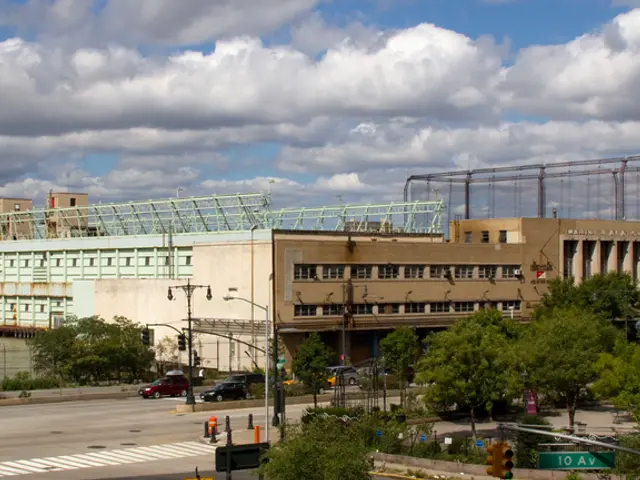Unveiling the Mixing Panel: Its Role and Function in Audio Production
In the realm of audio production, understanding and effectively using a mixing board can make all the difference. This essential piece of equipment allows you to control and blend multiple audio inputs into a unified output, transforming raw sound into a polished mix.
The Anatomy of a Mixing Board
At its core, a mixing board is composed of various components including faders, volume controls, pan controls, EQ controls, and auxiliary sends. Each track or instrument in a mix is assigned to a channel on the mixer. Gain knobs on a mixing board adjust the level of the input signals entering the board, while faders control the volume of each channel. Panning lets you decide where each instrument sits, be it left, right, or center, creating a spatial balance.
Streamlining Your Mixing Process
Efficient signal routing is key to a smooth mixing process. Subgroups allow you to group and control multiple channels together, making it easier to manage multiple elements in your mix. Auxiliary sends are used to route signals to effects or monitor mixes, while insert points allow you to apply processors directly to the channel's signal path.
Balancing Your Mix
Balance in mixing refers to the way sounds are distributed across the stereo mix, ensuring each element is heard clearly without overpowering the others. Understanding how to use a mixing board gives you the power to create a mix that is clear, balanced, and pleasing to the ear.
Harnessing the Power of Effects
Modern mixers often come equipped with advanced effects like customizable reverb, delay, chorus, and built-in compression. Using these effects dynamically on specific channels or the master bus can add depth, space, and character to your mix. Remember to understand the difference between pre-fader and post-fader routing for your auxiliary sends, as this changes how the effects interact with the signal depending on the fader position.
Advanced Techniques
Advanced techniques for using a mixing board in audio production include skillful application of EQ to cut or boost bass, mids, and highs, helping create smooth transitions between tracks or elements. Using filters (high-cut and low-cut) creatively can also produce professional blends and control frequency overlap. Dynamic control with compression and automation can refine balance and create movement in your mix.
Advanced routing on modular or digital boards increases flexibility for mixes involving many tracks or surround sound formats like Dolby Atmos. Precision beatmatching and harmonic mixing, mainly for DJs, can also be adapted for audio production requiring tight rhythmic blends and tonal coherence.
Quality Sound Capture
Proper use of trim and phantom power is essential for capturing quality sound. Utilize audio interface preamps to capture high-quality signals before they're routed through your mixer. When a mixer board is connected to a PC, it becomes an essential hub for audio processing, allowing adjustment of volume levels, equalization, and effects.
The Role of a Mixing Board in Live Performances and Studio Recordings
In both live performances and studio recording sessions, understanding consoles and desks is crucial for easy operation. In live performances, stage monitors enable performers to hear themselves and their bandmates clearly, while live monitoring equipment provides sound engineers with the mix as the performers do. In a home studio, a mixing desk offers greater control over individual track levels, enhanced audio effects and quality, and the ability to record multiple sources simultaneously.
A studio mixing console is crucial for crystal-clear audio recordings, as it meticulously adjusts and balances different audio inputs. Many modern consoles can integrate with Digital Audio Workstation (DAW) software, merging analog signal routing with digital recording capabilities.
In summary, advanced mixing board techniques involve combining precise signal processing (EQ, compression, effects), complex routing, dynamic automation, and knowledge of hardware capabilities to shape a polished, creative, and professional final mix.
- A mixing board, a crucial equipment in audio production, comprises faders, volume controls, pan controls, EQ controls, and auxiliary sends forshaping raw sound into a polished mix.
- In a home studio, a mixing desk allows for controlling individual track levels, applying advanced effects, and recording multiple sources simultaneously.
- Using EQ controls, a producer can cut or boost bass, mids, and highs, creating smooth transitions between tracks and blends.
- Modern mixers include effects like reverb, delay, chorus, and compression that, when used dynamically, can add depth, space, and character to a mix.
- Subgroups, auxiliary sends, and insert points are essential components for efficient signal routing during a smooth mixing process.
- Proper use of audio interface preamps, trim, and phantom power is essential for capturing high-quality signals before they're routed through your mixing board, providing a quality sound capture for further processing.




